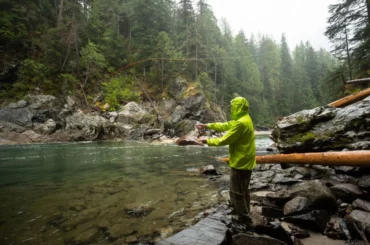Table of Contents

Transporting Mud Crabs Alive, Here’s How
If you want to have the delicious taste of mud crabs, Transporting Mud Crabs Alive will be vital. This content will explain how to do that properly.
The most important thing about mud crabs is keeping them alive before cooking. Even if you are not a die-hard fan of carbs, you may feel a mushy taste if you cook dead crabs. Besides, there can be hazardous bacteria on the crab flesh that you are about to cook. Therefore, both cooking and the transportation of crabs should be conducted with one thing in mind, keeping mud crabs alive. This content will explain Transporting Mud Crabs Alive.
Transporting Mud Crabs Alive Using Rigifoam Boxes
Transporting Mud Crabs Alive in rigid foam boxes is the most used method in Sri Lanka. Crabs are provided with favorable conditions in this method. Also, crabs are fighters and aggressive creatures, which the transporter should remember during the whole process. The transporter has to make sure that the fighting is going to be prohibited during transportation. When it comes to wounds and other damages, they will also have to be answered before transporting.
If the process goes according to the plan, crabs will be alive for days.
Sorting Out The Mud Crabs
The most important part of the Sri Lankan Mud Crab is their body. Grading is conducted as the first step, which allows the owner to identify valuable as well as crabs that can die during the transportation. The transportation should be completed within three days, which is going to be a tough time for the mud crabs. They are farmed and kept after removing the shell for about a month of the period.
It is a process that carbs go through a hard period which ensures the flesh of the carb is kept up to the standards. Before the transportation, grading has to be conducted to identify the grades of the crabs. When it comes to other criteria, weight Is the only thing to count. Those grades vary from small to extra large which weighs above 1kg.
Cutting The Claws Of Crabs To Prevent The Pinching
Pinching is restricted using two methods, cutting the claws by half and tying them up. Sri Lankan mud crab is an aggressive as well as a larger one than other crab species. All these two methods are practiced. Although the tied strings were loosened up and crabs got free, they will not be able to harm the others. Rubber gloves should be used when tying up the carbs as they may pinch the person who does the tying.
After cutting of claws is finished, carbs should be rinsed in cold saltwater. It will disinfect the wound and stop the bleeding. If the bleeding doesn’t stop, it will not be a crab that can be transported.
Tying Up The Crabs
Tying up the crabs ensures the process of Transporting Mud Crabs Alive. Twine should be used to do the tying. Both claws should be tied and then wrap around the body of the crabs. The tieing has to be conducted with great care as it may damage their bodies causing to have bleedings and die during Transporting Mud Crabs alive.
Providing With Rigifoam Boxes
As the next step of Transporting Mud Crabs Alive, rigid foam boxes should be found. Finding larger boxes allows the transporter to ensure that he is doing perfectly. Because packing crabs one on another induces the fighting, dead crabs may remain in the end. The closer the carbs are packed, the more they fight and the damage will be. That is what the transporter should remember when finding rigid foam boxes.
It is recommended to use rigid foam boxes with 1 foot of height as Sri Lankan Mud Crabs can not be packed as layers. Also, some ventilation holes should be prepared in the boxes to increase ventilation.
Adding Ice Bags On The Bottom Layer Is Optional
Ice is vital to keep the blue crabs alive. When it comes to Sri Lanks Mud carbs, they can bear the temperature unlike any crabs species in the world. The ability to bear temperature is in the genes. Besides, where they are farmed and harvested are the hottest regions in8 the country. Therefore, keeping them at a higher temperature is a risk that any farmer can bear. If the Transporting Mud Crabs Alive happens within the country, ice will not be necessary. If the Transporting Mud Crabs Alive happens to another country, adding ice bags to the bottom will ensure the safety of the procedure.
Covering with moist papers, and maintain the temperature below 35 degrees will have to be the main concerns in this step. After packing the ice bags, they should be covered using wet papers or polythene covers.
Packing The Rigifoam Boxes With Sri Lankan Mud Crabs
As the next step, packing Mud Crabs should be commenced. Crabs should not see each other, which means you have to pack them face to back-formation. Although space should not be left between two mud crabs, they should not be made closed forcibly. The bottom layer of the rigid foam box should be covered using mud crabs.
You have to remember that packing mud crabs one on another is not advisable at all. Although some exporters practice packing few layers of crabs such as blue crabs, lots o factors are against that when it comes to Sri Lankan Mud Crab. The body weight is the main reason as a grown crab may weigh up to 1kg which is not bearable to another crab. If you pack one crab layer on another, it may create struggles and increase the stress of crabs. Sometimes, even death can happen due to fights and the struggles of crabs. The best thing to do is to choose rigid foam boxes which are not higher than one foot.
Transporting Mud Crabs Alive Is The Next Step
It is optional to keep the oxygenator to keep the boxes oxygenated. It depends on the number of carbs that have been packed in a box. Now crabs can be transported within the next 72 hours. Since Singapore is the first country where the Sri Lankan Mud Crabs are transported, 72 hours are enough.
After Transporting Mud Crabs Alive Is Completed,
After the transportation is complete, dead crabs must be removed from the boxes. Even if there are crabs that are struggling to die, they also should be removed. Although the death percentage is varied from 2%-10% for other crabs species, that is irrelevant to Sri Lankan Mud Crab. Sri Lankan mud crab is as a string as the size which means they can withstand unfavorable conditions. Therefore, the death percentage during Transporting Mud Crabs Alive is between 3% to 0%.
Remarks On Transporting Mud Crabs Alive
A rigid foam box is the most used method to transport mud crabs alive. Although coolers are used for this process, in other words, Rigifoam boxes will be enough to do that for Sri Lankan Mud crabs. It is due to not only crabs’ can bear unfavorable conditions but their aggressive behavior. If you intend to transport them locally, special boxes or cooling will not be required. Tying them up will be quite enough. When it comes to transporting Sri Lankan Mud Crabs in less than 5 quantities, cooling will not be required, but tying and ventilation holes will be enough.






